PICTURED: US Air Force Osprey crew members killed in crash off the coast of Japan – as troops recover parts of plane but two bodies missing
The identities of eight crew members killed when a US Air Force Osprey plane crashed off the coast of southwestern Japan last week have been revealed.
A search team recovered three members and located the remains of three others as they continued to search for the two missing bodies, authorities said Tuesday.
“The depth of grief is immeasurable,” Lt. Gen. Tony Bauernfeind, commander of Air Force Special Operations, said in a statement announcing the names of the crew.
“The honorable service of these eight airmen to this great nation will never be forgotten as they now rank among the giants shaping our history.”
The crew members who died in the crash were identified as follows:
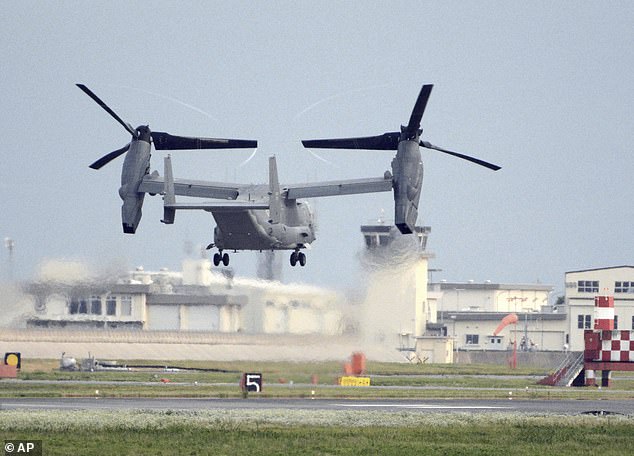
The identities of eight crew members killed when a US Air Force Osprey plane crashed off the coast of southwestern Japan last week have been revealed

A search team has recovered three members and located the remains of three others as they continued to search for the two missing bodies, authorities said Tuesday
Maj. Jeffrey T. Hoernemann, 32, of Andover, Minnesota, was a CV-22 instructor, pilot and officer in charge of the training.
Major Eric V. Spendlove, 36, of St. George, Utah, was a residency-trained flight surgeon and medical operations flight commander.
Maj. Luke A. Unrath, 34, of Riverside was a CV-22 pilot and flight commander.
Captain Terrell K. Brayman, 32, of Pittsford, New York, was a CV-22 pilot and flight commander.
Technology. Sergeant Zachary E. Lavoy, 33, of Oviedo, Florida, was the medical operations flight chief.
Staff Sgt. Jake M. Turnage, 25, of Kennesaw, Georgia, was a flight engineer.
Senior Airman Brian K. Johnson, 32, of Reynoldsburg, Ohio, was a flight engineer.
Staff Sgt. Jacob “Jake” M. Galliher, 24, was originally from Pittsfield, Massachusetts.

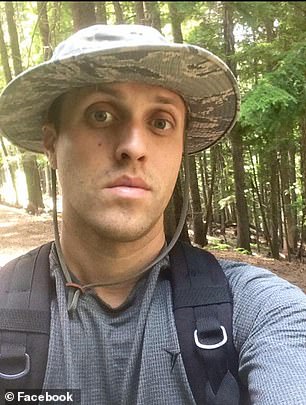
Maj. Jeffrey T. Hoernemann (left), 32, of Andover, Minnesota, was a CV-22 instructor, pilot and officer in charge of training. Major Eric V. Spendlove (right), 36, of St. George, Utah, was a residency-trained flight surgeon and medical operations flight commander.
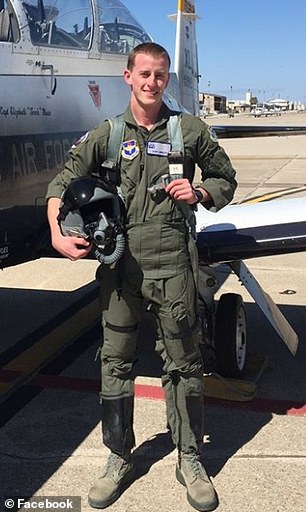

Maj. Luke A. Unrath (left), 34, of Riverside was a CV-22 pilot and flight commander. Captain Terrell K. Brayman (right), 32, of Pittsford, New York, was a CV-22 pilot and flight commander
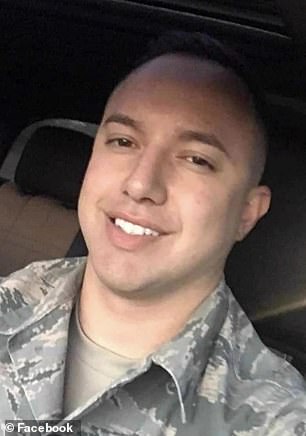
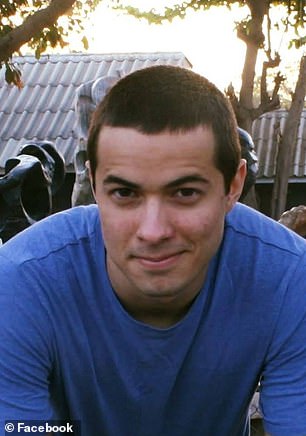
Technology. Sergeant Zachary E. Lavoy (left), 33, of Oviedo, Florida, was medical operations flight chief. Staff Sgt. Jake M. Turnage (right), 25, of Kennesaw, Georgia, was a flight engineer
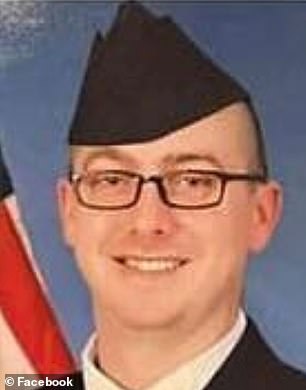
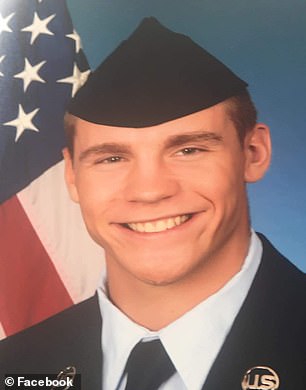
Senior Airman Brian K. Johnson (left), 32, of Reynoldsburg, Ohio, was a flight engineer. Staff Sgt. Jacob “Jake” M. Galliher (right), 24, was originally from Pittsfield, Massachusetts
Of the eight crew members, Galliher's remains were the first to be found. He is survived by his wife Ivy and two boys, aged two years and six weeks.
“Jacob was an incredible son, brother, husband, father and friend to many,” his family said in a statement.
“His short life impacted and improved the lives of hundreds, if not thousands, in Pittsfield, throughout this region and everywhere he served. Jacob lived to serve his family, his country and the people he loved,” the statement read.
President Joe Biden said he and first lady Jill Biden were heartbroken by the loss.
“We owe them everything,” Biden said in a statement. “Jill and I are praying for the families and friends who lost a loved one in this terrible accident.”
The US-made Osprey is a hybrid aircraft that takes off and lands like a helicopter, but can turn the propellers forward in flight and cruise much faster, just like an airplane.
The $90 million CV-22 Osprey with eight American crew members on board crashed off the coast of Yakushima island last Wednesday during a training mission.
“The main priority is getting the pilots home and taking care of their family members. Support for and the privacy of the families and loved ones affected by this incident remains AFSOC's top priority,” the report said.
On Monday, Japanese Navy and U.S. Army divers spotted what appeared to be the forward part of the Osprey, along with possibly five of the missing crew members, Japanese public television NHK and other media reported.
Japanese naval officials declined to confirm the reports, saying they could not release details without U.S. permission
A total of six coast guard ships and two helicopters were deployed as part of a rescue operation.
The use of the Osprey in Japan is controversial, with critics saying it can cause accidents. The US military and Japan say it is safe.
It is the second time in three months that an Osprey has been involved in an accident. Three Marines were killed during an exercise in Northern Australia. The cause of that crash has not been made public.
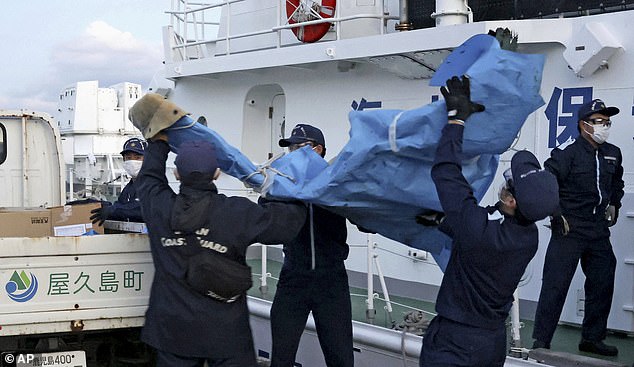
Members of the Japanese Coast Guard carry debris believed to be from the crashed US military Osprey aircraft
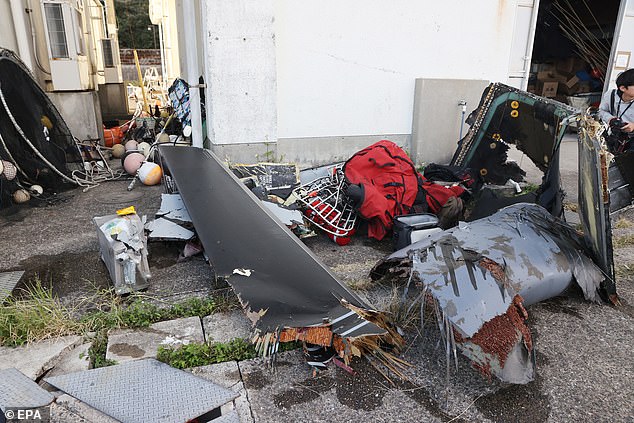
During the search, parts believed to be wreckage from the fuselage of a US Air Force CV-22 'Osprey' transport aircraft were recovered.
In June 2022, five Marines were killed in a fiery crash in a remote part of California east of San Diego.
A crash investigation report last month found that the tragedy was caused by a mechanical failure related to a clutch.
There have been 16 similar in-flight docking problems on Marine Ospreys since 2012, the report found.
In February 2023, the Marine Corps announced that a device believed to be the cause of the problem had been replaced.
The Osprey, a hybrid aircraft that takes off and lands like a helicopter, but can tilt its propellers forward in flight and fly much faster like an airplane. They are used by the US Marines, the US Navy and the Japanese Self-Defense Forces.
Since 2012, there have been six fatal accidents involving Marine Ospreys, killing 16 people.
A majority of the 50,000 U.S. troops stationed in Japan under a bilateral security treaty and 70 percent of U.S. military facilities are based in Okinawa, which covers just 0.6 percent of Japan's territory.
Japan has suspended all flights of its own fleet of fourteen Ospreys.
